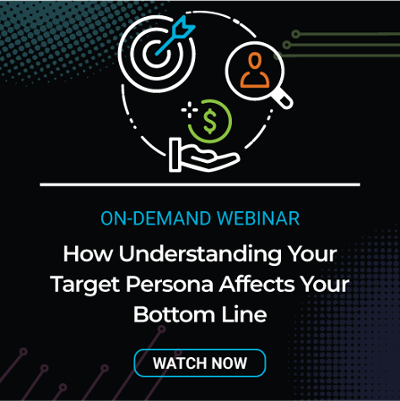How to Build a Social Media Strategy for Your Business
Social media is an essential piece of your inbound marketing strategy. Once you’ve created valuable content, social media is a great way to deliver...


If you were to go back to the year 1996 and tell people that social media was going to drastically change how you market your brand, they probably wouldn’t have known what you were talking about. They’d probably also have asked you to get out of the smoking section at the local McDonald’s before resuming their chat about how they wanted to get their kids VHS tapes for Christmas.
The point is, a lot has changed in a matter of a few years when it comes to inbound marketing, and social media has been a huge part of that shift. Not maintaining your business’s social media profile—or worse, not having one at all—is a huge mistake that’s letting your customers find your competitors before they even think about turning to you.
There are five steps you need to take to make sure your social media profiles are helping, rather than hurting, your inbound marketing strategy.
 Before you even start to think about the details of your social media strategy, you need to determine who your target persona is. Knowing who you’re speaking to is mission critical for not only planning your social media, but for the rest of your marketing strategy as well. After all, not being where your target personas are is akin to making your team work for hours to craft the perfect content, only to throw it into the void where likely nobody will see it.
Before you even start to think about the details of your social media strategy, you need to determine who your target persona is. Knowing who you’re speaking to is mission critical for not only planning your social media, but for the rest of your marketing strategy as well. After all, not being where your target personas are is akin to making your team work for hours to craft the perfect content, only to throw it into the void where likely nobody will see it.
For example, if you’re a B2B organization providing managed IT services to insurance companies, you might be barking up the wrong tree if you’re planning to put your content on Pinterest. Instead, you’re more likely to find your decision-making target persona on a platform like LinkedIn. Figuring this out before you even schedule your first post will help you find your audience more effectively.
Social media needs to get the same treatment for creating and curating relevant content that you use for other parts of your inbound marketing strategy. In this case, that means optimizing your social content as much as you do your website and blog.
One of the key parts of this is not only curating your social media content, but also incorporating SEO-friendly keywords into things like your company’s profiles. The keywords you’re using to attract users to your site’s main pages through organic search might also be valuable in your LinkedIn or Twitter profiles.
The most important piece of the puzzle, however, is to include links to your website on your social media profiles. While it might seem obvious, this is one of the first steps for any link building strategy. The ultimate point of your business being on any social media platform is to drive users to your website, after all.
Once you have the building blocks in place, that’s when the real work begins. Start posting regularly and often, and invite your team, your existing customers, and your leadership to follow your social media pages. Join industry-specific groups and start a conversation by asking questions and offering solutions without promoting yourself and your business. Share posts from thought leaders. This is just the starting point for building your page’s following, but it’s an important starting point if ever there was one.
An important caveat to this step: It’s all but guaranteed that building your reach will take time and a consistent publishing schedule. As the old saying goes, Rome wasn’t built in a day, but they were laying bricks every hour.
And for the love of all that is pure in this world, don’t buy followers, on Instagram or otherwise.
As fun as it can be to just pop off a pithy one-liner in a text post, that’s not likely to get you the engagement—or the website clicks—that you’re looking for. Create and curate relevant content and use multiple types of media to do it.
This might entail including customized graphics on your posts, videos, polls, or even going live to answer questions or talk about your industry from time to time. Whatever media you use for this, in most cases these days it’s valuable to add relevant hashtags to your content, particularly on platforms like Twitter, Instagram, and LinkedIn.
As with just about any piece of the inbound marketing puzzle, social media isn’t usually something where you can start out with the same strategy and expect instant success. It may take adjustments over time in order to get the results you’re looking for. So, how do you judge whether or not your social media strategy is working? At LeadG2, we look at a few different metrics when we’re analyzing social media strategies for ourselves and our clients:
The amount of website traffic from social media platforms
How many visitors became leads
How many followers your social platforms have
How much your content is being shared
The type of content that’s most engaging
From experience, this can be difficult to determine even if you have Facebook or Twitter analytics alone. While it is doable with just those tools, the social media management tools in platforms like Hootsuite, HubSpot, and Sprout Social allow you to look at the data from a wider scope to determine how your business is performing.
Social media is an invaluable tool for your inbound marketing strategy because it opens another avenue for your customers to find you on their own terms. Not only should you incorporate it into your marketing toolbox, but consider treating it as its own platform that your brand can use to engage with visitors and raise awareness, answer questions and offer solutions to their problems, and help them make the decision to become your customer.
*Editor's Note: This blog has been recently updated and repurposed.

Social media is an essential piece of your inbound marketing strategy. Once you’ve created valuable content, social media is a great way to deliver...

79% of the United States population has a social media profile. "Our industry doesn't use social media" is no longer an excuse. If 79% of the...

Did you know that there are bloggers out there who get most of their traffic from social media? You could achieve the same feat for your business,...